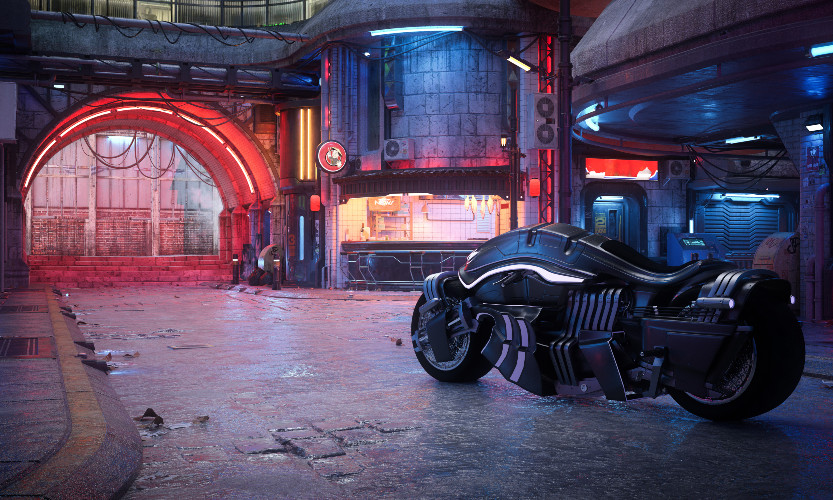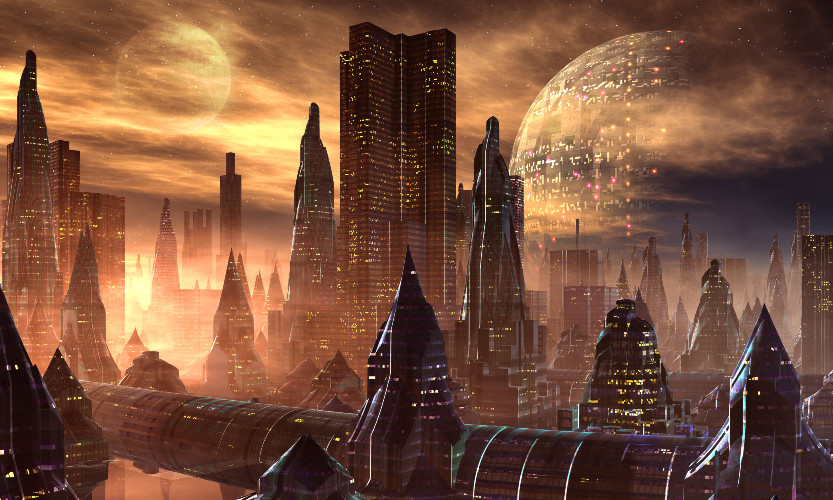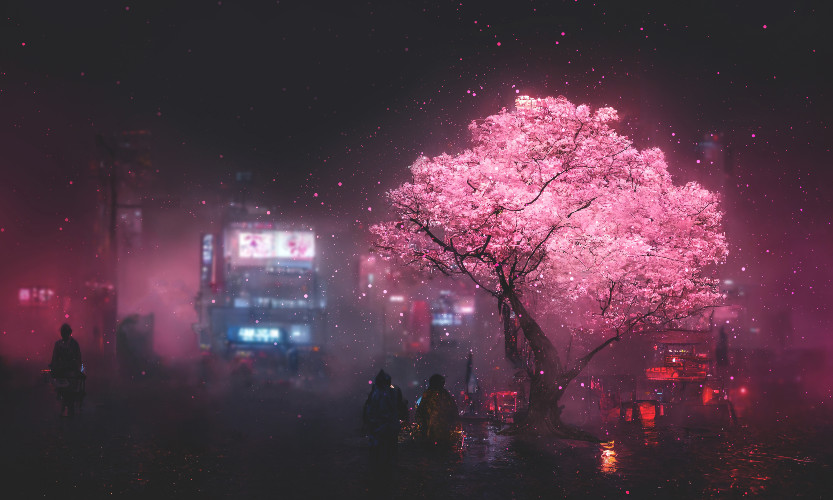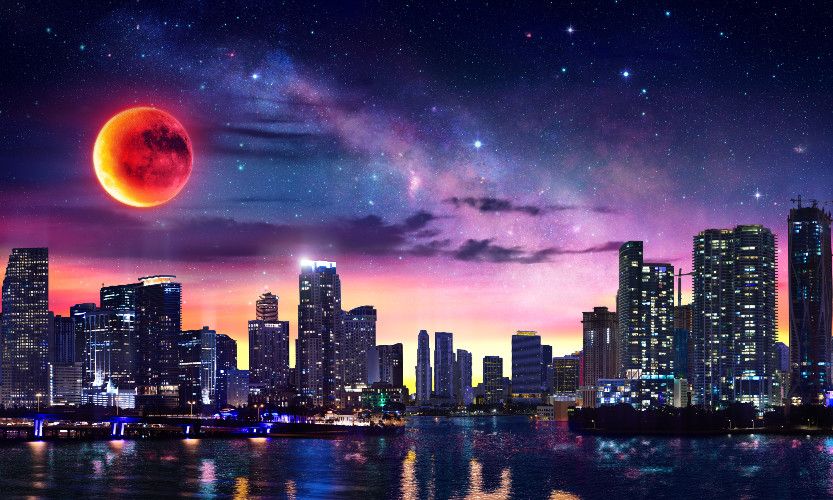In short, urban fantasy does what it says on the tin; it’s a genre of literature where fantasy is set against what can be considered an urban backdrop or a fantasy story that is set in a city or suburb.
Note that I’ve said “what can be considered,” meaning the fantasy doesn’t have to be set in New York or Chicago (existing cities) for it to be considered urban, it can be set in a made-up place as long as it fits an urban description. Often, like in the case of Gotham City, you will see fantastical places mirroring, or inspired by, real-life urban settings.
In this guide, you will learn what the urban fantasy genre is, how to recognise the urban fantasy genre, and discover our top tips for writing it.
We will cover how urban fantasy stories rose to popularity and the difference between urban fantasy and other fantasy sub-genres such as paranormal romance.
What Is Urban Fantasy? (This Time With Feeling)
Simply put, urban fantasy is fantasy set in a city or modern residential setting, but more often than not the urban setting becomes another character and provides a gritty nature/aesthetic to the story that readers of urban fantasy have come to love and seek out.
Think about it, what would the Sookie Stackhouse (Trueblood) novels or TV series be like if they weren’t set against Louisiana backwater towns? Would Buffy have the same vibe if she lived in a woodsy fantasy world, or if it was set in medieval times? Would Percy Jackson be the same popular series if Percy simply ventured to Olympus rather than the Greek Gods existing in, and interacting with, modern-day America (which is the best part of the series)?
Urban fantasy has a kind of asphalt colouration to it and the name of the genre speaks more to the aesthetic of the story than anything else.
The backdrop aesthetic in an urban fantasy is really important, and the look and feel of the setting often play a key role in the story; the setting in urban fantasy is an important character. For this reason, the urban setting needs to be very well developed.

What Is The Difference Between Urban Fantasy And Paranormal Romance?
Many books today fit neatly in both the urban fantasy sub-genre AND the paranormal romance category and there is a great deal of overlap between both genres, especially in the self-publishing sector. With that said the two genres are not mutually exclusive, they just happen to overlap.
Paranormal romance is a genre that combines fantastical characters such as vampires, werewolves, shifters, faeries, goblins, and witches, and puts romance at the front and centre of the storyline.
It is important to remember that urban fantasy and paranormal romance are not synonymous; one focuses on romance and the other is set against an urban backdrop but does not require romance.
There are just as many urban fantasy novels with romance as there are without. Both options are valid and it is up to you to decide whether romance will play an integral part in your story.
Key Elements Of Urban Fantasy
There are common elements that you will see in urban fantasy novels, however, it’s important to know your book can still fit in the genre without these elements as long as it’s set against the backdrop of an urban setting which then plays a significant part in the story.
Common elements of the genre include:
- A dark aesthetic (very rarely bright and sunny aesthetic)
- Derelict cityscapes (not countryside/ house on the prairie settings)
- Magic, fantastical, or sci-fi elements
- Poverty or a disadvantaged class
- Thriller-like vibes (crimes being solved, mysteries)
- Combat (think Divergent or The Hunger Games)
- City problems (rats, undergrounds, clashes with local bodies of authority)
- Paranormal creatures
- Dystopian elements
- Urban clothing (leather, heavy-duty clothes, uniforms)
- Fantastical and supernatural elements
- Romance subplots
- A character living in two worlds (the normal urban world and the fantastical underlayer world that they are aware of)

Examples Of Urban Fantasy
Here are a few examples of some YA and adult urban fantasy novels:
- Rivers of London by Ben Aaronovitch
- Neverwhere by Neil Gaiman
- American Gods by Neil Gaiman
- Daughter of Smoke and Bone by Laini Taylor
- House of Sky and Breath by Sarah J Maas
- City of Bones by Cassandra Clare
- Percy Jackson and the Lightning Thief by Rick Riordan
- Vampire Academy by Richelle Meade
- Wicked Lovely by Mellissa Maar
- Crave by Tracy Wolf
- The Alex Craft series by Kalayna Price
- The Mercy Thompson series by Patricia Briggs
- The Jane Yellowrock series by Faith Hunter
Urban Fantasy And YA
As you can see, YA fiction is heavily present on the list. That’s because YA books very often intersect with urban fantasy as urban fantasy is very popular amongst teen readers; hence some of the most recognisable urban fantasy titles are also in the YA genre.
Often urban fantasy explores the idea, ‘what if X fantastical beings lived among us?’
The blend of taking a character who is used to their modern world (one that we the reader also recognise) and showing them a side of their world they were not aware of, is very popular in the genre.
Books Which Aren’t Examples Of Urban Fantasy
And here are a few famous books that might be considered urban fantasy but aren’t:
- The Harry Potter series by J.K Rowling
- The Chronicles of Narnia by C.S. Lewis
- The Lord of the Rings series by J.R.R. Tolkien
These books do not have the key elements of the urban fantasy sub-genre.
Of course, these classics are heavy in fantasy however they lack the integral urban setting to qualify for the urban fantasy genre, despite featuring cities at times.
Harry Potter, though from the urban world, spends very little time in it and most of the books take place entirely in the magical world. Though some people would probably argue that Harry Potter does spend some time in the urban world, it’s too little to put the book in the urban fantasy genre.

Tips For Writing Urban Fantasy
There are many ways to write urban fantasy books but here are some tips:
Turn The Setting Into A Character
In the books I co-write (Blood Web Chronicles by Caedis Knight) the cities the books are based in play a huge role; in Vampires of Moscow and Witches of Barcelona the urban backdrops function as important characters. Meaning the books would just not be the same without those cities.
The urban backdrop in urban fantasy stories cannot be static, it has to be a living breathing thing.
For example, if your fantasy is set in New York, but there are only a handful of mentions of the city, then you are not serving the genre justice. Use the city on every level possible- atmosphere, characterisation, plot development.
Make sure to research your setting (if it’s a real city) and use good descriptions to characterise it. Make sure your chosen setting is constantly serving the story.
Maybe ask yourself the question, how does this setting push the story further? How does it aid the main character’s development? How does the city stand in the way of the characters’ goals? If your main character grew up in this city, how did it shape them?
Think about how important Sunnydale is in Buffy the Vampire Slayer, and how its position on the Hellmouth plays a large role in Buffy’s life and her development as the main character. Buffy’s entire life- who she dates, who she becomes, her traumas and triumphs, are defined by Sunnydale and the Hellmouth.
Recognise And Utilise Fantasy Tropes
When adding paranormal or fantastical creatures ask yourself how they interact with the setting. How does the setting serve them? Where do they hide? How does (or doesn’t) the city provide for them? Where do they hang out? How does this setting characterise and shape their lives?
Think about the tropes in the fantasy books you’ve read, and adjust them to make them your own.
A helpful tip is to print a map of the city or draw one (quality doesn’t matter here) and decide where in the city your different factions or paranormal groups prefer to dwell and why.
You can use Google Maps to save locations and create an entire real-life map of where your characters (and villains) spend their time.
This could help you with your writing and as a bonus be shared with your readers down the line.
Read A Lot Of Urban Fantasy For Inspiration
Urban fantasy is an ever-growing genre that has been amassing popularity quickly in recent years.
Because urban fantasy lovers tend to read widely in the genre, it’s a good idea to read (and research) a number of urban fantasies so that you know you are getting it right.
More importantly, you will get inspired when it comes to designing your own urban setting.
Create Pinterest Boards With Urban Aesthetics
What does the dingy New York bar where your werewolves hang out look like? What does your city hall look like? Where are you drawing inspiration for your urban tunnels or derelict factories?
Design The Elements That Go Hand In Hand With Your Urban Setting
What do people eat in this city? What do people wear? You might get caught up in your fantasy plot and forget to truly colour the urban backdrop. When I think about fantasy set in New Orleans I instantly think about the food.
Currently, in our Caedis Knight series we are writing about werewolves in Berlin, and though Berlin is a slightly derelict gloomy city perfect for urban fantasy, we have been careful to include all the colourful food- Pink Berliner Weise beers, the world’s best kebabs, fresh Baklava from the Neukoln district- all to add colour and warmth to the story.
It’s important to remember that cities are not just architecture- they are food, music, events, crime, nature and a million other things you must include in your book.
Similarly, if you are writing urban fantasy that’s dystopian and your setting is truly all doom and gloom, explore that! Explore what people eat in this impoverished society and how they survive; dig deep into the darkness of this setting and how that relates to the characters.

Frequently Asked Questions
What Are Some Examples Of Urban Fantasy?
Some examples of popular urban fantasy include American Gods by Neil Gaiman, the Shadowhunter series by Cassandra Clare, and the Southern Vampire Stories (Sookie Stackhouse novels) by Charlaine Harris.
What Is The Difference Between Fantasy And Urban Fantasy?
Urban fantasy is a sub-genre in which the fantasy plotline plays out against an urban backdrop and the urban setting plays an important role. All urban fantasy sits in the fantasy genre but not all fantasy is urban.
What Are The Elements Of Urban Fantasy?
Elements of urban fantasy include a dark noir feel, the city as a character, mysteries and crime solving, combat, romantic sub-plots, derelict settings, fantastical characters and paranormal characters. They also often involve a character with a foot in both worlds.
Writing Urban Fantasy
It is very beneficial for authors to explore the sub-genre of urban fantasy as it’s a genre that keeps rising in popularity. Not to be confused with paranormal romance, urban fantasy has earned its place as one of the highest-selling sub-genres in fantasy and one of the most lucrative indie sub-genres on Amazon.
It’s a great genre to consider if you are passionate about fantastical plots and characters but wish to set your story against a gritty urban modern backdrop.
Most importantly, be prepared to treat your chosen urban setting as an important character in your plot.








